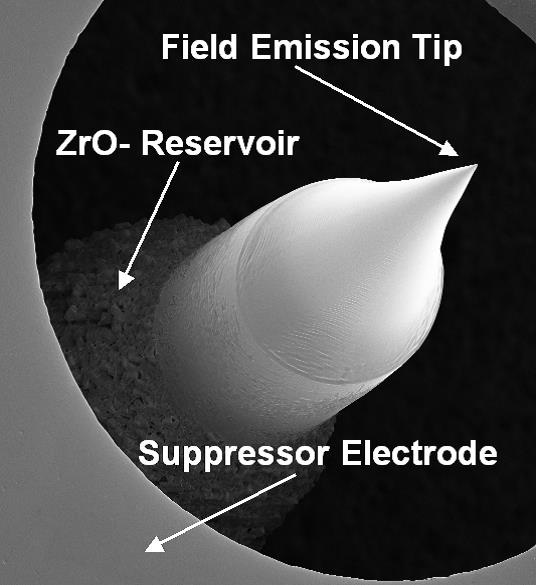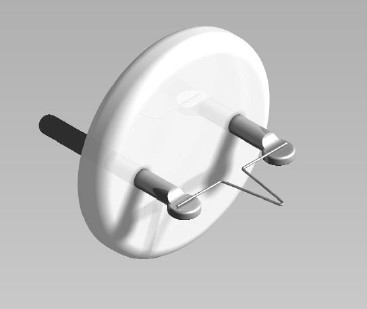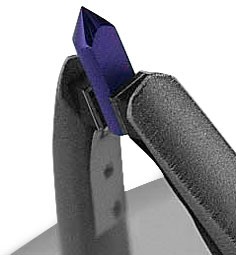Descriptions of Electron Microscope Cathodes and Emitters
The Scanning Electron Microscope (SEM) requires a source of electrons to form a beam and can utilize various emitters.



These emitter-cathodes are placed in the gun area and in some cases this emitter-cathode is called the “Source”. Which SEM emitter is appropriate is dependent on the application. Worldwide, more “Thermionic” or tungsten emitter electron microscopes are installed. These instruments provide good resolution and adequate probe current, with chamber geometries that support analytical techniques such EDS and WDS analysis. In cases where higher resolution is required, especially for non-conductive materials that cannot be sputter coated with conductive materials, the scientist or engineer will require a Lab6 (Lanthanum Hexaboride) source of FESEM (Field Emission Scanning Electron Microscope) source. The FESEM sources, Schottky or Cold Cathode, provide excellent low accelerating voltage performance. The low accelerating voltage is required to optimize the charge balance with non-conductive materials that are uncoated. Example materials that are suitable for low keV imaging Polymers, Silicon and Paper.
The advantage of the lower accelerating voltage interaction is that more true surface information will be visible to the scientist or engineer. As different emitters and cathodes are used, so too are the vacuum requirements for the specified source. For example, Tungsten filaments have the least stringent vacuum requirements to operate and can be turned on at 1 x 10-4 torr. In comparison Lab6 requires 5 x 10-6 torr to turn on, Schottky Emitters 1 x 10-9 and Cold Cathode Emitters require 1 x 10-11 torr. As you require a higher vacuum to operate an emitter, so too is there a more complicated vacuum design i.e. additional high vacuum ion pumps.



Below is a table outlining the various emitter-cathode sources and their respective operating parameters. The following Electron Source Performance Table is provided to give you additional information regarding the performance and requirements for different types of electron emitters. As mentioned Tungsten cathodes are still used in the majority of all SEMs and in general use TEMs. Improved results can be obtained with LaB6 cathodes, whereas the highest resolution can be obtained with either Schottky or Cold Field Emission Sources.
| Emitter Type | Thermionic | Thermionic | Schottky FE | Cold FE |
|---|---|---|---|---|
| Cathode Material | W | LaB6 | ZrO/W (100) | W (310) |
| Operating Temp (K) | 2700 | 1800 | 1800 | 300 |
| Cathode Radius (nm) | 60,000 | 10,000 | <1000 | <100 |
| Effective Source Radius (µm) | 25 | 10 | 0.015 | 0.0025 |
| Emission Current Density (A/cm2) | 3 | 30 | 5300 | 17,000 |
| Total Emission Current (µA) | 200 | 80 | 200 | 5 |
| Brightness (A/cm2.sr.kV) | 1x104 | 1x105 | 1x107 | 2x107 |
| Maximum Probe Current (nA) | 1000 | 1000 | 10 | 0.2 |
| Energy Spread @ Cathode (ev) | 0.59 | 0.4 | 0.31 | 0.26 |
| Energy Spread @ Source Exit (eV) | 1.5 – 2.5 | 1.3 – 2.5 | 0.35 – 0.7 | 0.3 – 0.7 |
| Beam Noise (%) | 1 | 1 | 1 | 5 – 10 |
| Emission Current Drift (%/h) | 0.1 | 0.2 | <0.5 | 5 |
| Operating Vacuum (hPa/mbar) | <10-5 | <10-6 | <10-8 | <10-10 |
| Typical Cathode Life (h) | 100 | >1000 | >5000 | >2000 |
| Cathode Regeneration (h) | None | None | None | 12-Jun |
| Sensitivity to External Influences | Minimal | Low | Low | High |

